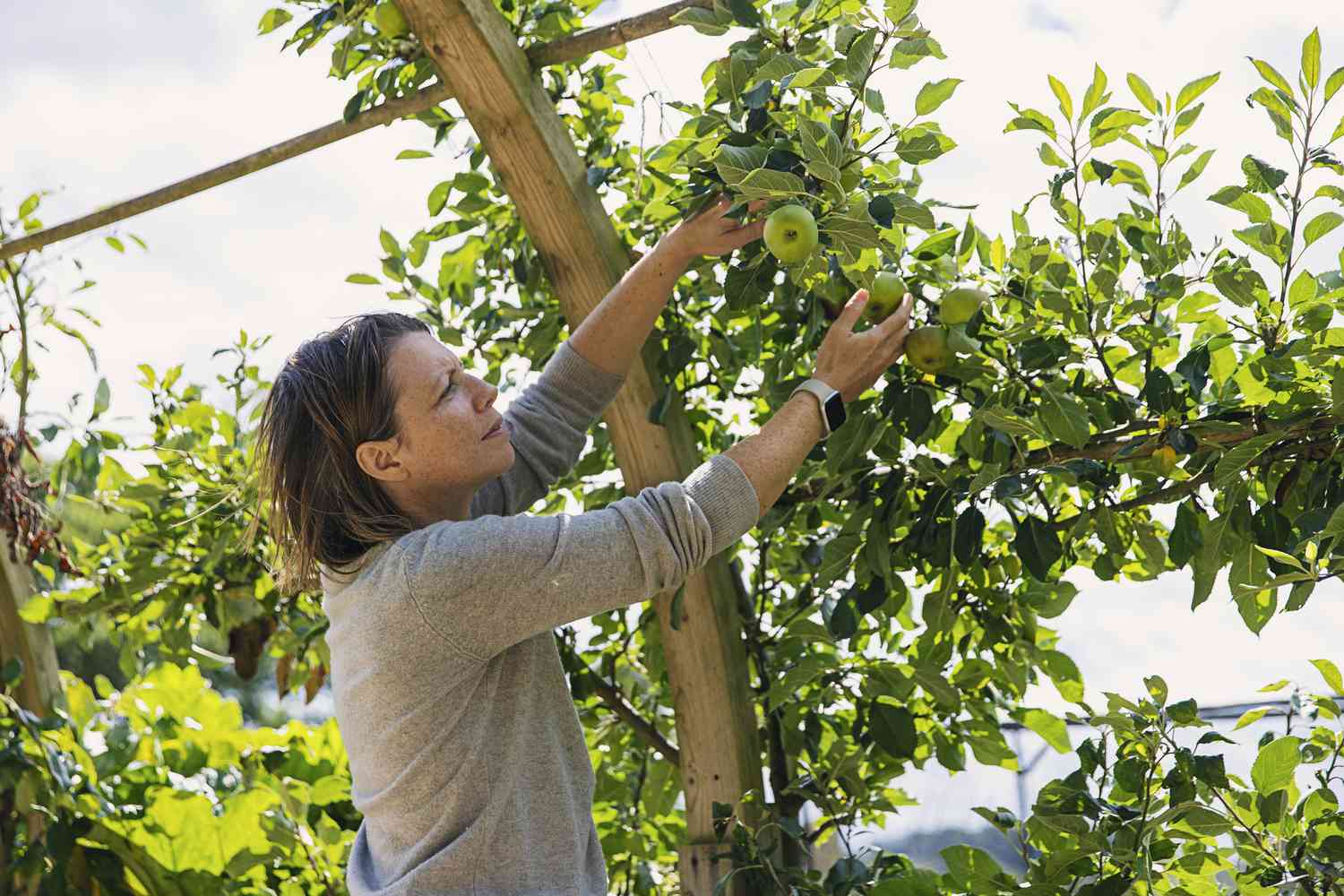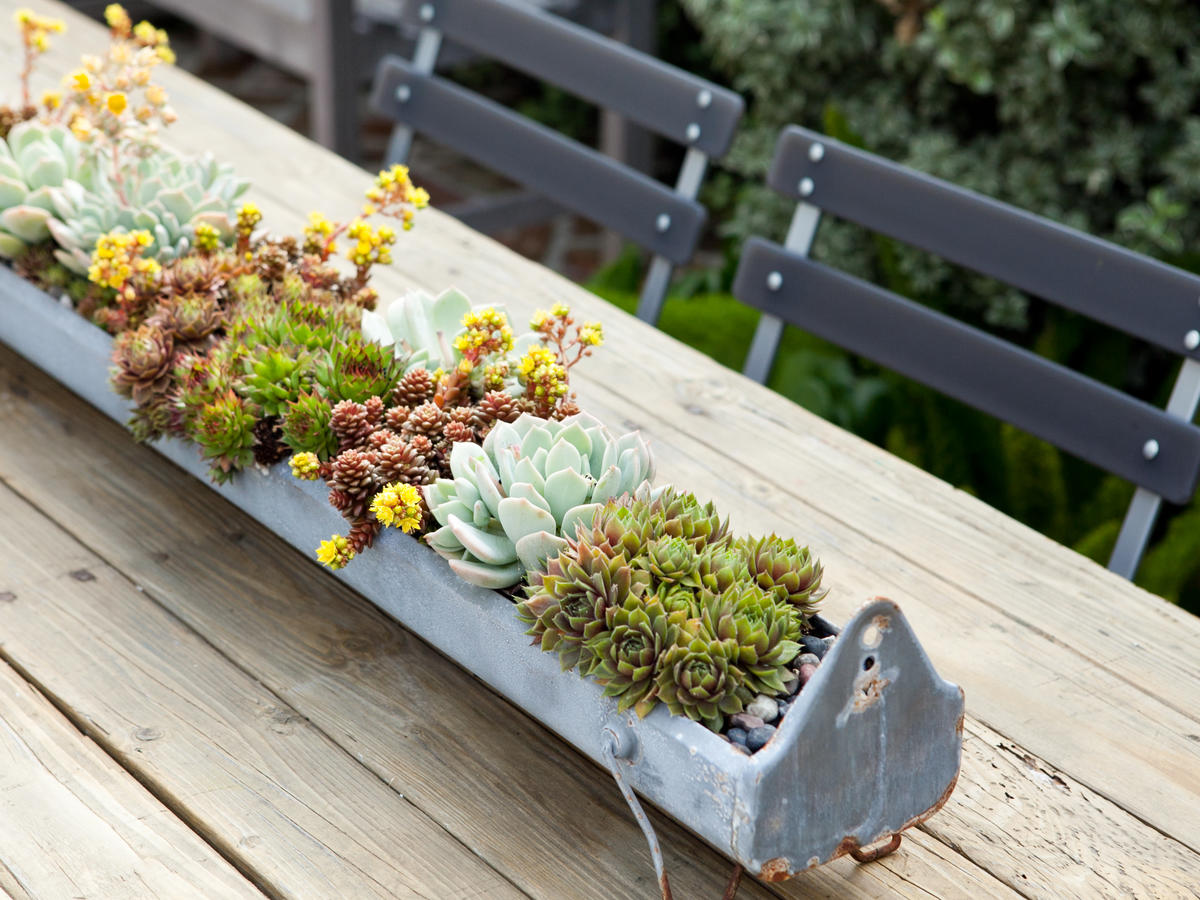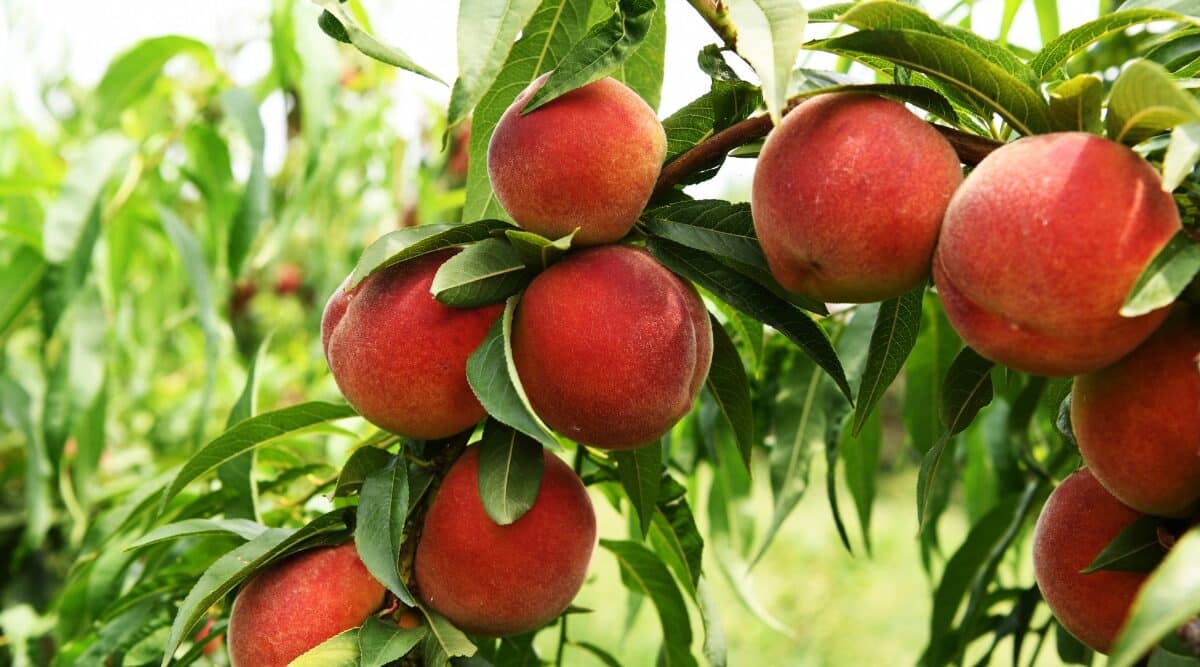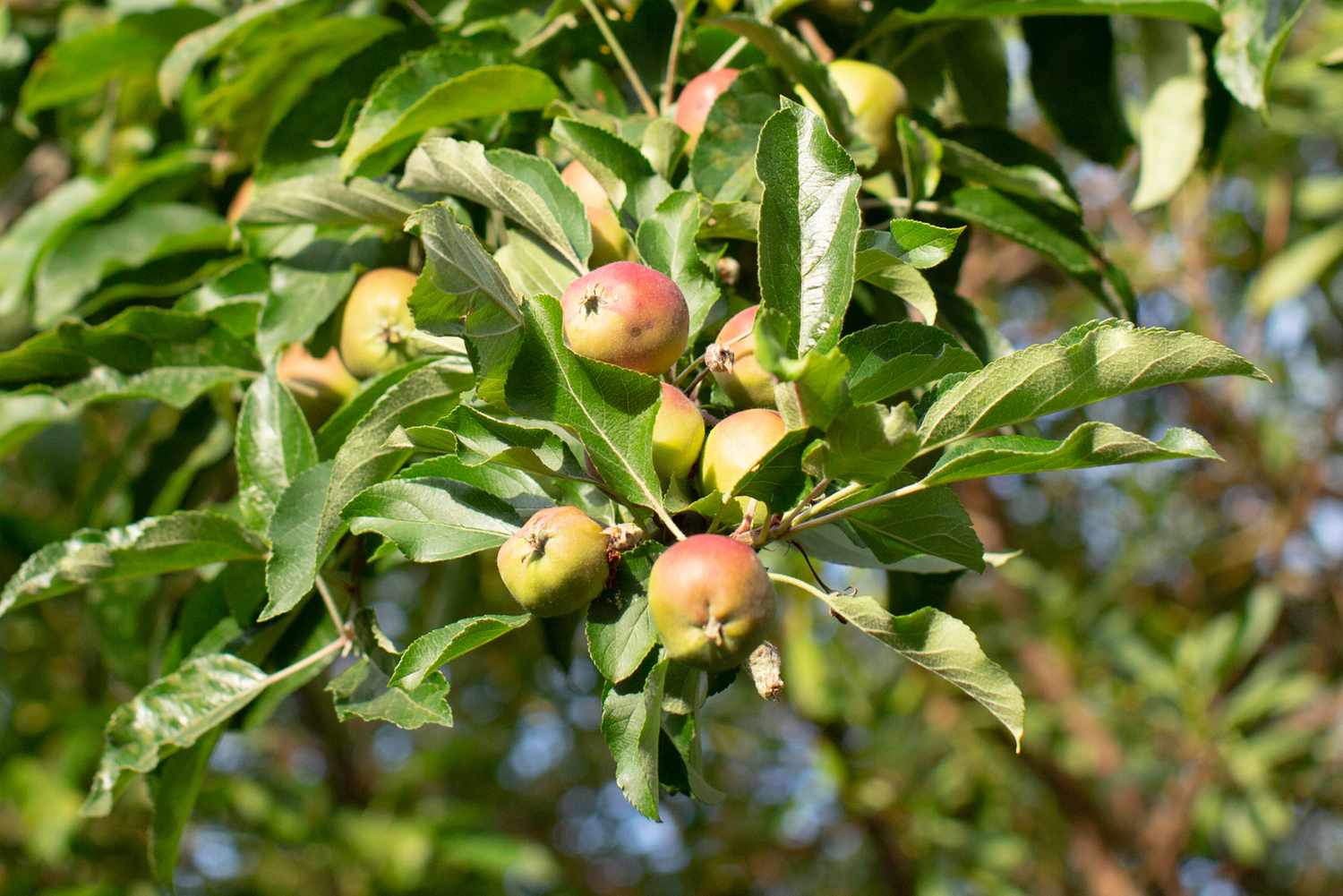Home>Gardening Techniques>Plant Care>How To Take Care Of Fruit Trees


Plant Care
How To Take Care Of Fruit Trees
Modified: January 22, 2024
Learn the essential steps for plant care of your fruit trees. From planting and watering to pruning and fertilizing, discover how to keep your fruit trees healthy and thriving.
(Many of the links in this article redirect to a specific reviewed product. Your purchase of these products through affiliate links helps to generate commission for Chicagolandgardening.com, at no extra cost. Learn more)
Table of Contents
Introduction
Fruit trees are a beautiful and rewarding addition to any garden or landscape. Not only do they provide delicious fruits that can be enjoyed fresh or used in various culinary creations, but they also offer aesthetic value with their blossoms and foliage. However, like any living organism, fruit trees require proper care and attention to thrive and produce an abundant harvest.
In this article, we will explore the essential steps and techniques for taking care of fruit trees. Whether you’re a seasoned gardener or a beginner, these tips will help you ensure the health and productivity of your fruit trees.
Keep in mind that different types of fruit trees have varying needs in terms of sunlight, water, and pruning techniques. Therefore, it is crucial to research and understand the specific requirements of the fruit tree variety you wish to grow. This will help you provide the optimal conditions for your trees to flourish.
Now, let us dive into the various aspects of fruit tree care, starting with selecting the right location.
Choosing the Right Location
When it comes to planting fruit trees, choosing the right location is crucial for their long-term health and productivity. Here are some factors to consider when selecting the perfect spot for your fruit trees:
- Sunlight: Fruit trees thrive in full sun, so choose a location that receives at least six to eight hours of direct sunlight each day. This will ensure proper photosynthesis, which is essential for fruit production.
- Soil Type: Fruit trees prefer well-drained soil that is rich in organic matter. Conduct a soil test to determine its pH level and nutrient content. Most fruit trees prefer slightly acidic to neutral soil (pH 6.0-7.0).
- Space: Consider the mature size of the fruit tree and provide enough space for it to grow and expand. Fruit trees should be planted at least 10 to 15 feet apart from other trees or structures to allow for proper air circulation.
- Proximity to Pollinators: Many fruit trees require cross-pollination to produce fruit. If you are planning to grow fruit trees that need cross-pollination, ensure that there are pollinators, such as bees or other fruit trees, nearby.
- Protection from Wind: Strong winds can damage fruit trees and inhibit fruit production. Consider planting the trees in a location that is sheltered from strong winds, such as near a barrier or against a fence or wall.
By carefully selecting the right location for your fruit trees, you provide them with the best possible growing conditions and set the stage for their long-term success. Now that you have chosen the perfect spot, let’s move on to the next step: planting the fruit tree.
Planting the Fruit Tree
Planting a fruit tree properly is essential for its establishment and growth. Here are the steps to follow when planting your fruit tree:
- Choose the Right Time: The ideal time to plant fruit trees is during the dormant season, typically in late winter or early spring. This allows the tree to establish its roots before the growing season begins.
- Prepare the Soil: Dig a hole that is wide and deep enough to accommodate the tree’s root system. Loosen the soil and remove any weeds or grass from the planting area. Consider adding organic matter, such as compost, to improve soil fertility and drainage.
- Inspect the Roots: Before planting, carefully inspect the roots of the tree. Trim any damaged or broken roots, and ensure that the root ball is moist, but not overly saturated.
- Position the Tree: Place the tree in the center of the hole, ensuring that the graft union (the swollen area where the tree was grafted onto the rootstock) is above the soil line. Spread the roots outward, being careful not to force or bend them.
- Backfill the Hole: Gradually backfill the hole with the soil, firming it gently around the roots as you go. Avoid compacting the soil too tightly, as this can prevent proper root development and water penetration.
- Water Thoroughly: After planting, water the tree thoroughly to settle the soil and ensure good root-to-soil contact. Add a layer of mulch around the base of the tree to help retain moisture and suppress weeds.
Remember to provide regular watering during the tree’s first year to promote healthy root development. Avoid overwatering, as this can lead to root rot. As the tree grows, you can adjust the watering frequency based on its specific needs.
Now that your fruit tree is planted, let’s move on to the next step: watering and irrigation.
Watering and Irrigation
Proper watering and irrigation are crucial for the health and vitality of fruit trees. The goal is to provide consistent moisture to the roots without overwatering. Here are some guidelines to follow when watering your fruit trees:
- Establishment Phase: During the first year after planting, fruit trees require regular watering to encourage root establishment. Water deeply once or twice a week, ensuring that the water reaches the root zone. Monitor the soil moisture level and adjust the frequency based on weather conditions.
- Mature Trees: Once the tree is established, adjust the watering schedule to meet the tree’s needs. Fruit trees generally require about 1-2 inches of water per week, either from rainfall or supplemental irrigation. Deep watering is preferable to frequent shallow watering, as it encourages deep root growth.
- Monitor Soil Moisture: Check the moisture level in the soil regularly by inserting a finger or a soil moisture meter into the root zone. If the soil feels dry, it’s time to water. However, be cautious not to overwater, as excessive moisture can lead to root rot and other diseases.
- Mulching: Apply a generous layer of organic mulch around the base of the tree, leaving a gap near the trunk to prevent moisture buildup. Mulch helps to retain soil moisture, regulate temperature, and suppress weed growth. Replenish the mulch as needed throughout the year.
- Irrigation Systems: Consider using drip irrigation or soaker hoses for efficient watering. These methods deliver water directly to the root zone, minimizing water waste and reducing the risk of fungal diseases. Avoid overhead sprinkler systems, as they can promote the spread of diseases and may not provide uniform water coverage.
Remember that the watering needs of fruit trees can vary depending on factors such as soil type, weather conditions, and tree variety. It’s essential to observe the tree’s response to watering and make adjustments accordingly.
Next, we’ll explore the importance of fertilizing the tree to promote healthy growth and abundant fruit production.
Fertilizing the Tree
Fertilizing fruit trees is essential to provide them with the nutrients they need for healthy growth and optimal fruit production. Here are some guidelines to follow when fertilizing your fruit trees:
- Soil Testing: Before applying any fertilizer, it’s beneficial to conduct a soil test to determine the nutrient levels and pH of the soil. This will help you understand which nutrients your tree may be lacking and adjust your fertilization approach accordingly.
- Timing: Fertilize your fruit trees in early spring before the active growth period begins. This allows the nutrients to be readily available as the tree starts producing new leaves and fruit.
- Choose the Right Fertilizer: Select a balanced, slow-release fertilizer specifically formulated for fruit trees. Look for a fertilizer with a ratio of nitrogen (N), phosphorus (P), and potassium (K) that suits the needs of your tree species.
- Application: Apply the fertilizer evenly around the drip line of the tree, avoiding direct contact with the trunk. Follow the package instructions for the recommended amount to use based on the size and age of your tree.
- Watering: After applying the fertilizer, water the tree thoroughly to help dissolve and distribute the nutrients into the soil. This helps prevent any potential root burn and ensures that the tree can absorb the fertilizer effectively.
- Annual Maintenance: For mature fruit trees, it’s generally recommended to fertilize once a year. However, if your soil test indicates nutrient deficiencies, you may need to fertilize more frequently or provide additional targeted nutrients.
- Organic Options: If you prefer organic fertilization, consider using compost, well-rotted manure, or other organic sources of nutrients. These can help improve soil fertility and provide a slow release of nutrients over time.
Remember to follow the fertilizer’s instructions and avoid over-fertilizing, as this can lead to excessive growth, weak branches, and a reduction in fruit quality. Regular fertilization, combined with adequate watering and proper soil management, will contribute to the overall health and productivity of your fruit trees.
Next, we’ll explore the importance of pruning and trimming fruit trees for their overall structure and fruit production.
Pruning and Trimming
Pruning and trimming fruit trees are essential practices for maintaining their health, shape, and productivity. Proper pruning promotes good airflow, light penetration, and the development of strong branches. Here are some guidelines to follow when pruning and trimming fruit trees:
- Timing: Prune fruit trees during their dormant season, typically in late winter or early spring before new growth begins. This allows the tree to heal quickly and reduces the risk of disease transmission.
- Remove Dead and Diseased Branches: Start by removing any dead, damaged, or diseased branches. These can attract pests and spread infections to healthy parts of the tree. Cut back to the branch collar, which is the swollen area where the branch attaches to the trunk.
- Thin Out Excess Branches: Thin out crowded areas by removing some of the branches. This will improve airflow and allow sunlight to reach all parts of the tree, promoting better fruit development.
- Prune for Structure: Shape the tree by selectively pruning to create a strong central leader and well-spaced lateral branches. This opens up the canopy, reduces the risk of branch breakage, and facilitates easier harvesting.
- Pruning Young Trees: For young fruit trees, focus on establishing a well-balanced framework of branches. Remove any competing leaders or branches that cross or rub against each other.
- Pruning Mature Trees: Maintain the structure and health of mature fruit trees by removing dead or weakened branches, controlling their size, and encouraging new growth. Pay attention to the tree’s natural shape and growth habit to determine which branches to prune.
- Sanitize Tools: To prevent the spread of diseases, sterilize your pruning tools with a solution of 10% bleach or rubbing alcohol between cuts or when moving between trees.
Always remember that the goal of pruning is to maintain the tree’s overall health, shape, and productivity. Over-pruning can stress the tree, so be cautious and avoid removing more than 20-30% of the canopy in a single year.
By regularly pruning and trimming your fruit trees, you will promote better fruit production, reduce the risk of diseases, and maintain the overall health and appearance of your trees.
Next, we’ll explore important strategies for pest and disease control in fruit trees.
Pest and Disease Control
Pests and diseases can pose a significant threat to the health and productivity of fruit trees. Implementing effective pest and disease control measures is essential to protect your trees and ensure a bountiful harvest. Here are some strategies to help you control pests and diseases in your fruit trees:
- Regular Monitoring: Inspect your fruit trees regularly for any signs of pests or diseases. Look for chewed leaves, discolored or wilting foliage, unusual growths, or presence of insects. Early detection allows for timely intervention.
- Cultural Practices: Maintaining good cultural practices can mitigate pest and disease issues. Keep the area around the trees clean by removing fallen leaves and debris, as they can harbor pests and pathogens. Properly dispose of infected plant material to prevent the spread of diseases.
- Natural Predators: Encourage natural predators, such as beneficial insects and birds, to control pests in your orchard. Ladybugs, lacewings, and birds like bluebirds and chickadees feed on common orchard pests, including aphids and caterpillars.
- Biological Controls: Consider using biological controls, such as beneficial nematodes or insect-repelling plants, to manage specific pests. These natural methods can effectively control pests without causing harm to the environment or beneficial insects.
- Chemical Control: As a last resort, chemical control methods, including insecticides and fungicides, may be necessary to combat severe pest or disease infestations. However, always follow the instructions provided by the manufacturer and use chemicals responsibly, taking into consideration environmental and human safety concerns.
- Integrated Pest Management (IPM): Adopting an integrated pest management approach combines multiple strategies to control pests and diseases effectively. This includes preventative measures, biological controls, cultural practices, and targeted use of chemicals only when absolutely necessary.
- Regular Pruning: Pruning helps remove diseased or infested branches, preventing the spread of diseases. It also opens up the canopy, allowing better airflow and sunlight penetration, which can discourage certain pests and reduce disease frequency.
It’s essential to identify the specific pests and diseases that commonly affect fruit trees in your region. Consult with local gardening experts or extension services to obtain valuable information on pest and disease management specific to your area.
By implementing a combination of these pest and disease control strategies, you can help protect your fruit trees and ensure their long-term health and productivity.
Next, we’ll discuss the exciting part of fruit tree care: harvesting the fruits of your labor!
Harvesting the Fruit
Harvesting the fruits from your fruit trees is an exciting and rewarding experience. The timing and proper techniques for fruit harvesting play a crucial role in ensuring the best flavor and quality. Here are some guidelines for harvesting your fruit:
- Observation: Monitor the progress of your fruit as it matures. Fruits should reach their appropriate size, color, and firmness before being harvested. Each fruit variety has its own specific signs of maturity, so refer to gardening resources or consult with experts for accurate information.
- Gentle Handling: Handle the fruits with care to prevent any damage or bruising. Use both hands to gently twist or lift the fruit from the branch. Avoid pulling or jerking, as this can harm the tree or cause the fruit to split.
- Timing: Harvest fruits when they are fully ripe but still firm. Overripe fruits may have reduced flavor and a shorter shelf life. However, some fruits, like apples and pears, can be harvested slightly underripe and allowed to ripen off the tree.
- Storage Conditions: Store harvested fruits in a cool, dry place to prolong their freshness. Use appropriate storage containers that allow for good air circulation to prevent spoilage.
- Harvest in Batches: If your fruit tree produces an abundance of fruit, consider harvesting in several stages. This allows you to enjoy the fruits at different levels of ripeness and prevents a sudden overwhelming harvest.
- Prune After Harvest: Take advantage of the post-harvest period to perform any necessary pruning to maintain the shape and health of your fruit tree. Remove any dead or damaged branches and ensure good airflow throughout the canopy.
Freshly harvested fruits from your own fruit trees offer unparalleled flavors and nutritional value. Enjoy the fruits as they are, create mouthwatering recipes, or preserve them for future use.
Now that you’ve harvested your delicious fruits, it’s time to prepare your fruit tree for the winter months.
Winterizing the Tree
Preparing your fruit tree for the winter months is crucial to protect it from cold temperatures, frost, and other potential winter damage. Winterizing practices will ensure the tree’s survival and promote healthy growth in the upcoming seasons. Here are some steps to winterize your fruit tree:
- Pruning: Prune your fruit tree in late winter or early spring before the buds break dormancy. Remove any dead, diseased, or crossed branches to prevent them from becoming entry points for pests or diseases during the winter.
- Cleaning: Clean the area around the tree, removing fallen leaves, fruits, or debris. This reduces the risk of diseases and pests overwintering in the vicinity of the tree.
- Mulching: Apply a layer of mulch around the base of the tree, extending it a few feet from the trunk. This helps to insulate the soil, regulate temperature, and prevent damage from fluctuating freeze-thaw cycles.
- Wrapping: For young or newly planted trees, consider wrapping the trunk with burlap or tree guards. This provides protection against winter sunscald and prevents rodent damage.
- Watering: Proper hydration is essential before winter sets in. Ensure that your fruit tree receives adequate water until the ground freezes. This helps to prevent drought stress and maintain healthy root systems during the dormant period.
- Protecting from Frost: During early spring when frost is still a concern, consider using frost blankets, row covers, or even Christmas lights to provide additional warmth and protect blossoms and emerging leaves from late frosts.
- Wind Protection: If your area experiences strong winter winds, consider erecting windbreaks or temporary fencing to shield your fruit tree from the drying effects of cold winds.
It’s essential to note that the winterizing practices may vary depending on the specific fruit tree species, local climate, and region. Consider consulting with local gardening experts or extension services for tailored advice based on your specific conditions.
By implementing proper winterizing techniques, you can help safeguard your fruit tree against winter damage and create the ideal conditions for its success in the seasons to come.
With these winter preparations complete, you are now equipped to care for your fruit tree throughout the year, enjoying its beauty and abundant harvest. Happy gardening!
Conclusion
Caring for fruit trees requires time, attention, and a bit of knowledge, but the rewards are well worth the effort. By following the proper techniques and implementing essential practices, you can ensure the health, productivity, and longevity of your fruit trees.
In this article, we have explored the various aspects of fruit tree care, including choosing the right location, planting, watering, fertilizing, pruning, pest and disease control, harvesting, and winterizing. Each step plays a vital role in maintaining the overall well-being of your fruit tree.
Remember to select a suitable location with adequate sunlight, well-drained soil, and protection from wind. Proper planting techniques and regular watering are essential for establishing strong root systems. Fertilizing the tree provides the necessary nutrients for growth and fruit production.
Pruning and trimming help shape the tree and promote airflow, while effective pest and disease control maintain its health and productivity. Harvesting the fruit at the right time and storing them properly allows you to enjoy the rewards of your hard work. Winterizing the tree protects it from cold temperatures and other winter-related damage.
Throughout the year, observe your fruit trees closely and adjust your care practices as needed. Local climate, tree variety, and individual tree conditions may require specific considerations, so staying informed and seeking local expertise are valuable resources.
With dedication, proper care, and a little patience, your fruit trees will thrive, providing you with delicious fruits and a beautiful addition to your garden or landscape.
So, roll up your sleeves, put your gardening gloves on, and embark on this gratifying journey of fruit tree care. Your bountiful harvest awaits!







